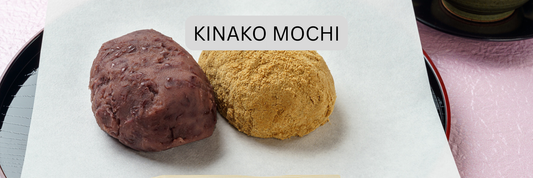Stop throwing away discard. Make sourdough discard crackers — thin, crispy, tangy crackers you can flavor with seeds, cheese, or herbs. This guide gives a fail-proof sourdough crackers recipe, options for no-flour 3-ingredient crackers, and professional tips on rolling to 1/16 inch for maximum crispness. Ready to bake?
Why make sourdough discard crackers?
Sourdough discard crackers are a perfect mini-project: they reduce waste, require minimal ingredients, and reward you with a homemade crunchy snack that’s tangy and versatile. Many bakers prefer crackers because they extract flavor from discard without needing a long bake time or complex shaping — the discard’s natural acidity adds a pleasant tang and depth that pairs beautifully with cheeses and dips. Making crackers also helps home bakers who maintain an active starter: rather than tossing the discard you can convert it into something shelf-stable and sharable. Finally, crackers are forgiving; small differences in discard hydration or refrigeration state can be accommodated with small tweaks in spread thickness or bake time. (See common approaches and pros/cons in competing recipes.)

Two main methods
There are two primary ways to make sourdough discard crackers: spread-and-bake and dough-roll-cut-bake. The spread-and-bake method mixes discard with fat and seasonings, then spreads the thin batter directly onto parchment and bakes. It’s fast and works well for very thin, cracker-like crisps — the 3-ingredient technique is a classic example. The dough method uses discard plus enough flour (or cheese) to create a rollable dough; this allows for cut shapes, layered seeds, and richer textures (shortbread-like crackers when butter is used). Choice of method depends on whether you want ultra-thin crisps (spread-and-bake) or cuttable crackers with more body (rolled dough). Both methods enjoy wide use among high-ranking recipes online.
Ingredients & best variations
Base ingredients (typical):
- Sourdough discard (unfed or refrigerated discard) — 1 cup typical starting point
- Fat: melted butter or olive oil — adds flavor and improves crispness. Many bakers favor butter for richer flavor; olive oil is fine and yields different mouthfeel.
- Salt — essential to bring out flavor.
- Optional binder: flour (all-purpose or a bit of whole wheat) or grated cheese for structure in roll-and-cut versions.
Popular variations
- Seeded sourdough crackers — add sesame, chia, flax, or sunflower seeds for texture and nutrition. Many seed recipes recommend threading seeds for even distribution so they don’t clump while spreading.
- Cheese crackers — grated parmesan or cheddar folded into dough for savory “Cheez-It”-style crackers. These have a shortbread-like texture when butter is used.
- Herb & garlic — add dried or fresh herbs and garlic powder for flavored crackers (garlic-parmesan is a common favorite).
Substitutions
- Vegan: swap butter for coconut oil or a neutral oil. Expect slightly different texture and flavor.
- Gluten-free: use a GF flour blend if making the rolled dough method; spread-and-bake with discard and seeds can be naturally lower in gluten if no extra flour is added.
Step-by-step recipe — Buttery Thin Sourdough Discard Crackers (rolled dough method)
Yield
~3–4 dozen crackers (depending on cut size)
Ingredients
- 1 cup sourdough discard (stirred)
- 1/3 cup unsalted butter, cold and cubed (or 1/4 cup olive oil)
- 1 cup all-purpose flour (if you want cuttable crackers; omit for spread method)
- 1/2 tsp salt
- Optional: 1/4 cup grated parmesan (for cheese crackers) or 1–2 tbsp seeds/herbs
Prep & mixing
In a mixing bowl combine discard and cold cubed butter. Use a pastry cutter, fork, or stand mixer to cut the butter into the discard until the mixture resembles wet sand. Add flour, salt, and any optional cheese or seeds. Mix briefly until a cohesive dough forms — do not overwork. For olive oil, whisk it with discard and gradually add flour until a workable dough forms (it will be slightly less flaky than butter dough). Chill the dough in the fridge for 15–30 minutes so it’s easier to roll thinly. This step helps control spread in the oven and makes it simpler to get uniform thinness when rolling between parchment. The chilled dough also improves the shortbread-like texture in butter-based crackers. (Technique adapted from top roll-and-cut recipes.)
Spreading/rolling & thickness guide
Roll the chilled dough between two sheets of parchment to your target thickness. Aim for 1/16 inch (≈1.5 mm) for ultra-crispy crackers or up to 1/8 inch (≈3 mm) for crackers with a little bite. Thinner is critical for the classic crisp; if the dough is too thick, centers may remain soft. For the spread-and-bake method, spread the discard-and-fat mixture with an offset spatula to as even a layer as possible — again, extremely thin is best. Some bakers divide the dough and roll across two baking sheets so you can reach the ideal thinness without ripping the dough. Score or cut with a pizza cutter to make uniform pieces; piercing with a fork or chopstick helps steam escape and avoids blistering. Many top recipes emphasize the 1/16" guideline as the most reliable path to crispness.
Baking times & temperatures
Preheat oven to 350°F (175°C) for thicker crackers, or 325°F (165°C) for very thin spread-and-bake styles (temperatures vary across recipes). Line baking sheets with parchment or silicone mats. Bake for 10–18 minutes depending on thickness: thin crackers may crisp in 10–12 minutes; thicker cut crackers need 15–18 minutes. Watch for even golden-brown edges; rotate pans halfway through for uniform color. If using convection, reduce temp by ~15–25°F (about 10–15°C) and check earlier. Remove crackers as soon as they’re nicely golden (they’ll crisp up further while cooling). If some pieces brown faster, remove them and allow others to continue a few extra minutes. Top sources provide bake-time ranges and reiterate that ovens vary; visual cues (golden edges) are your best guide.

Troubleshooting & pro tips
Why crackers aren’t crispy
If crackers turn out soft or chewy, the usual culprits are too much thickness, insufficient bake time, or excess moisture in the discard. To fix softness: roll thinner (aim for 1/16"), extend bake time in small increments while monitoring color, and ensure even spreading/rolling so pieces cook uniformly. In spread-and-bake versions, very wet discard may require a minute or two longer or a slightly lower oven temp so the cracker dries before browning. Adding a little extra fat (like a tablespoon) won’t help with crispness; if anything, it can make crackers cook differently — instead, focus on thinness and bake time. Many creators repeat that thickness is the single most important factor for crispness.
How to avoid uneven browning
Divide dough into two pans if you have a small surface area to get thinner sheets that bake evenly. Rotate sheets halfway and use parchment or silicone mats for consistent heat distribution. If you see darker spots, they likely correspond to uneven thickness — reposition or patch thin areas before baking. For using seeds, sprinkle them on the dough and press lightly before baking to prevent burning; alternatively, mix them into the dough for even distribution. If a batch has some crackers darker than others, remove browned pieces early and return the rest to the oven until uniformly colored. These small adjustments help maintain consistent texture and color across the batch.
Refrigerated vs room-temp discard
Most recipes accept refrigerated discard straight from the fridge; simply mix and proceed (though chilling the dough briefly before rolling often helps). Several high-ranking pages explicitly note that refrigerated discard works and that very long-stored discard can still produce good crackers, though flavor may be more pronouncedly tangy. If using cold discard in the spread-and-bake method, allow an extra minute or two of bake time to ensure moisture evaporates. If your discard is particularly watery, consider a small addition of flour for the dough method or patience in the oven for the spread method. Multiple sources confirm flexibility here, which makes crackers an excellent use for leftover refrigerated discard.
Storage, shelf life & serving suggestions

Storage & shelf life
Allow crackers to cool completely on a wire rack before storing to avoid trapped steam. Store in an airtight container at room temperature for up to 7–10 days (depending on humidity) - crispness will generally be maintained if fully dry. For longer storage, vacuum-sealed bags or freezer storage after flash-freezing single layers can extend life to several months; re-crisp in a low oven for a few minutes if softened. Seeded or cheese crackers might have slightly different shelf lives (cheese versions can become oilier over time). Label containers with bake date; in humid climates, consider silica-pack-style desiccants to maintain crunch. Many recipe authors note that a fully dry cracker keeps best at room temp in airtight storage.
Serving ideas
Serve sourdough discard crackers with an assortment of cheeses (aged cheddar, soft brie), charcuterie, hummus, or flavored dips. Herb/garlic-parmesan crackers pair wonderfully with creamy cheeses, while seeded crackers complement smoked fish and savory spreads. For appetizers, top crackers with ricotta, honey, and walnuts for a sweet-savory bite. Use crackers as salad toppers for crunch, or pulse into crumbs for crusts and coatings. Because sourdough discard lends a mild tang, these crackers balance creamy and fatty pairings beautifully — perfect for snack boards, picnic lunches, or as homemade gifts packaged in airtight tins.
FAQ — People Also Ask (concise answers)
Q: Can you use sourdough discard in crackers?
A: Yes — discard makes excellent crackers in both spread-and-bake and roll-and-cut methods. Many top recipes use unfed or refrigerated discard successfully.
Q: Do sourdough discard crackers need flour?
A: Not always. The spread-and-bake (“3-ingredient”) method sometimes uses only discard, fat, and salt; roll-and-cut versions typically include flour for structure.
Q: How thin should I roll sourdough crackers?
A: Aim for 1/16 inch for the crispiest result; up to 1/8 inch yields a slightly heartier cracker. Many high-ranking recipes emphasize 1/16" as ideal.
Q: Can I make these vegan / gluten-free?
A: Yes — swap butter for a vegan fat (coconut oil or vegan butter) and use gluten-free flour blends for roll-and-cut recipes. Spread methods with seeds can be naturally low in gluten. Test texture, as substitutions change mouthfeel.
Q: How long do sourdough crackers keep?
A: If thoroughly cooled and stored airtight, expect about 7–10 days at room temperature; freezer storage extends this. Shelf life depends on moisture and added ingredients (cheese shortens shelf stability).
Conclusion
Sourdough discard crackers are an easy, flexible, and eco-friendly way to use leftover starter. Whether you want a 3-ingredient spread-and-bake cracker or a buttery roll-and-cut parmesan cracker, the keys are thinness, consistent baking, and flavoring to taste. Try the base recipe above, experiment with seeds and cheeses, and remember that thinness (1/16") plus correct bake time are your biggest levers for crispness. If you enjoyed this guide, print the recipe, try one or two variations this week, and share your results — tag us or subscribe for more discard recipes and troubleshooting tips.
Read More:







